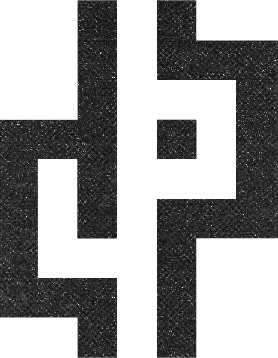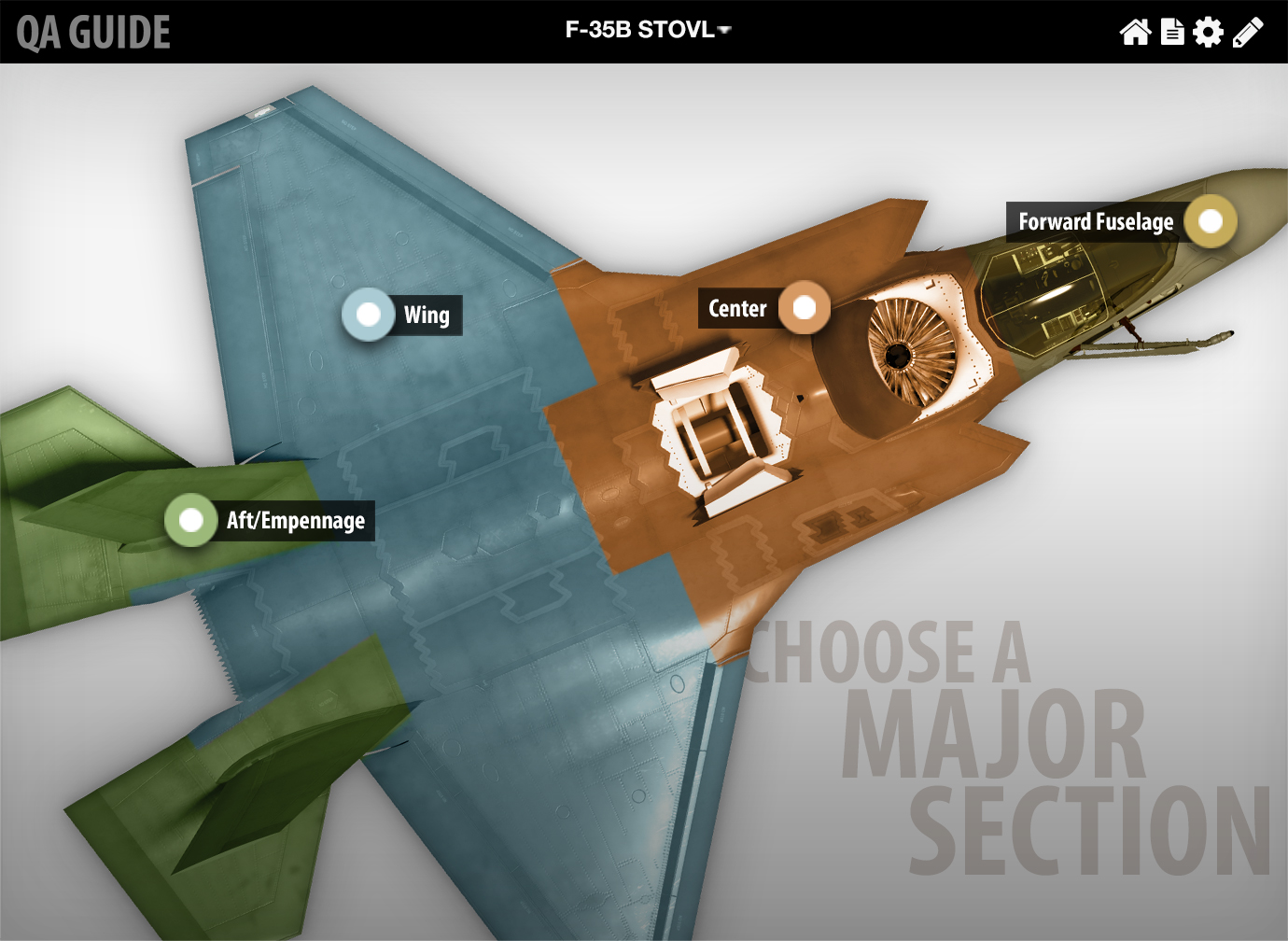F-35 Quality Assurance Tool
A web-based quality assurance tool designed for Lockheed Martin Aeronautics Company. The project's impact continues today—significantly improving process efficiency, reducing maintenance costs, and accelerating the detection of faulty aircraft component installations.
Project Overview
Existing system of twelve inspection carts with sixteen binders each was inefficient, inconsistent, and costly to maintain. Product Inspectors struggled with navigation between F-35 configurations and updating component photos.
Goal: Gain a better understanding of Product Inspectors workflow, needs, and pain-points. Create a solution that improves efficiency for Product Inspectors on the floor and simplifies content updates for the Engineering team.
Solution: Designed a web-based system accessible via iPads, featuring intuitive navigation through aircraft configurations and sections, and an easy-to-use content management system.
Results: The tool revolutionized the inspection process, significantly reducing time and costs associated with quality assurance tasks and content management.
My Role: UX Designer responsible for research, wire-framing, and high-fidelity mockups for both front-end and back-end systems.
Audience: Product Inspectors and Engineers
Timeline: Launched in 2014, ongoing development.
Discovery
Stakeholder Interviews: Research involved shadowing and interviewing Product Inspectors and Engineers, as well as observing their interactions with binders and aircraft. This comprehensive approach provided valuable insights into the workflow and challenges faced by the team.
Inconsistent Information: Product Inspectors struggled with inconsistent information across binders and needed a more visual method of quality assurance.
Time-consuming Maintenance: Switching between F-35 configurations posed challenges, and the process of viewing and updating component photos was time-consuming. Several inspectors expressed a desire for a "more visual reference guide." These insights guided our design approach for the new web-based system.
Define
We created personas representing tech-savvy Engineers and change-resistant Product Inspectors to identify key pain points. This led to proposing a shift from physical "inspection carts" to an iPad-accessible web-based system.
We focused on key features to address the main pain points identified during our research, including a streamlined navigation between F-35 configurations, quick access to tasks and information, efficient photo management, and a user-friendly interface for both front-end and back-end users.
Quick look at Emily: A young, tech-savvy engineer who's excited about new ideas in airplane technology. She loves using new tools and is good with technology, which makes her great at promoting the new quality check system. However, she might need help working with older coworkers who don't like change. This can help make sure everyone uses the new technology smoothly.
Quick look at Mike: He shows why it's hard to bring in new technology when experienced workers resist change. He knows the new quality check tool might be helpful, but he's stubborn and afraid of becoming outdated. This makes him hesitant to fully use the new system. To help Mike and others like him adapt, it's important to address their worries and give them plenty of support during the change.
Design
Wireframes: We created and presented high-fidelity wireframes showcasing navigation through aircraft configurations and mockups for both front-end (Product Inspectors) and back-end (Engineers) systems.
Buy-in: The enthusiastic feedback on the system's efficiency and potential for time and cost savings proved crucial. It secured buy-in from all stakeholders for the web-based tool.
Deliver
Visual Interface: The final design addressed the initial problems through an intuitive, visual interface for easy navigation and quick content updates via iPad.
Streamlined Process: This web-based system allowed access from anywhere on the production floor, streamlining the inspection process.
Results
Time and Cost Savings: The new system revolutionized the inspection process, dramatically boosting efficiency for Product Inspectors—reducing inspection time to just 15% of what it took using the previous binder method (based on time keeping records). It also significantly simplified content management for Engineers, cutting updating time by 80%.
Bonus: Physical inspection carts became obsolete and were repurposed through donation to local schools.





